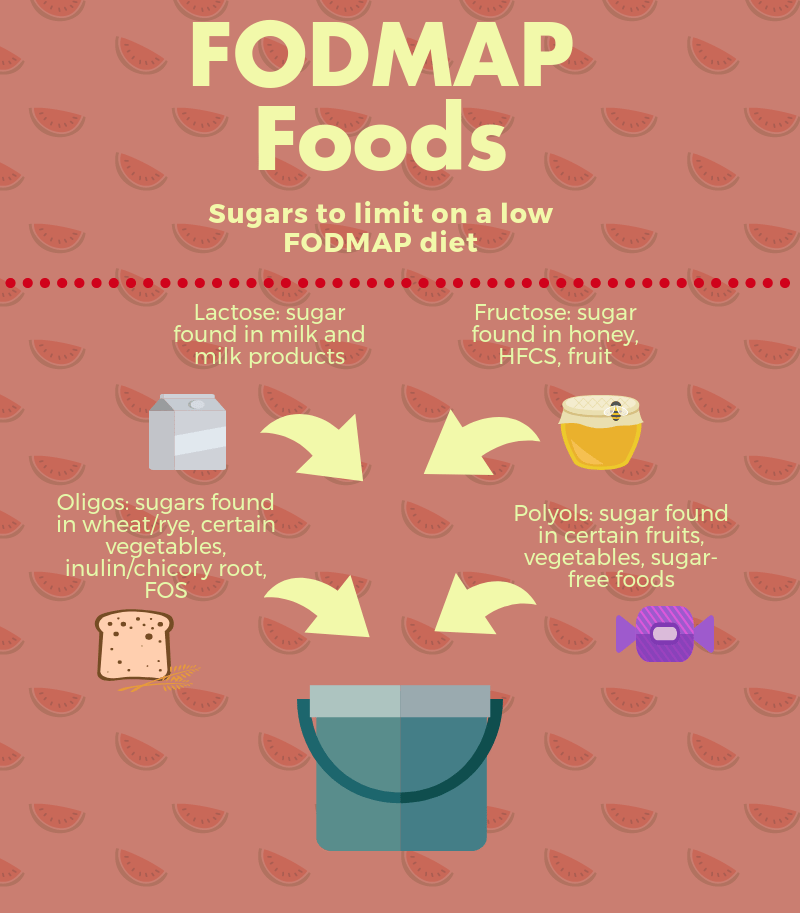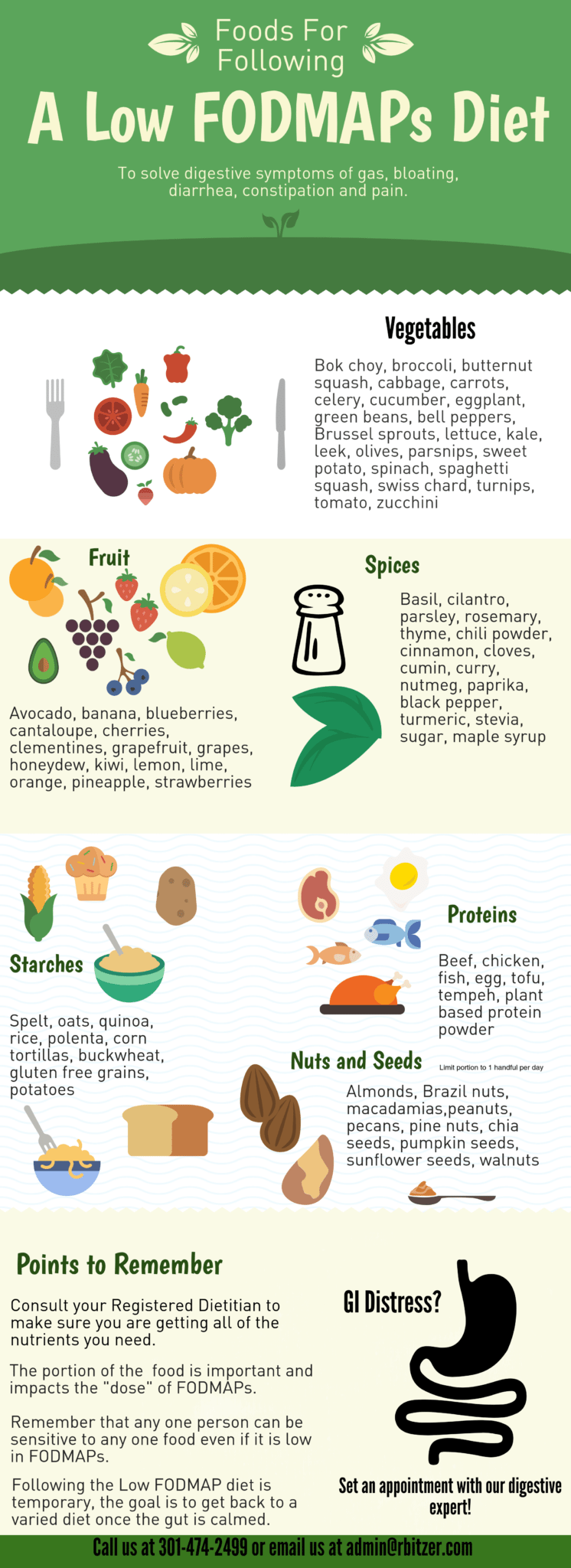Are you have severe symptoms of bloating, gas, constipation, diarrhea?
If so, testing out a low fodmap (Low FODMAPs) diet may be the right move for you.
Below are the steps in following a Low FODMAPs diet and some things to consider.
What is a Low FODMAP diet?
1. 70% of Those Suffering with IBS find relief with the Low FODMAP diet.
The Low FODMAP diet works to relieve the symptoms of IBS by removing the 5 sugars that ferment in our gut. These sugars are supposed to be broken down in our large intestine; however, they are starting that process in the small intestine, which produces the gas, bloating and pain. Low FODMAPs is an elimination diet in which we eliminate or greatly reduce the amount of these we are eating.
2. What is Removed or Limited?
If you are not able to completely abstain from these foods it is OK! Just by reducing the total load of FODMAPs in your diet we will be able to tell if this plan is working for you.

3. What can I eat on a low fodmap diet?

4. The low fodmap diet is short-term.
This therapeutic diet typically is followed anywhere from 3-6 weeks. At that point we start expanding the diet to incorporate more foods. Why you may ask? First the foods that are removed from the diet in this plan are those that feed the bad bacteria in our gut, however they are also fuel (prebiotics) for the good bacteria and are necessary for the health of our digestive tract. We also need a variety of foods in order to get all of the nutrients we need. How does it work if we add these foods back in? The answer is two fold. 1. We remove the offenders giving the gut the opportunity to heal. At that point we can treat with probiotics, digestive enzymes, stress reduction etc. to repair the gut. Once it is repaired it is better equipped to handle these offending foods when they are trialed. 2. Once we achieve a baseline of living symptom free we can efficiently “challenge” other foods by adding them back in and seeing if symptoms return. The goal being that we determine exactly which foods give you issues and can discover how much of that food you can tolerate without having any problems. Food sensitivities can have a delayed response meaning that symptoms can occur 45 minutes after eating the food or it can happen up to 3 days after. For this reason keeping a food log is very important.
5. Keep a food log.
Many people with gastrointestinal issues are not strangers to food logs and may even have months or years of records that have been fruitless in finding the culprit. This time it is different. We know what we are looking for and in keeping the food log we can really identify the symptoms and the severity so we know if this plan is right for you within 2 weeks.
6. This plan can be limiting.
It is important that you meet with a Registered Dietitian knowledgeable about the Low FODMAP diet so they can help tailor it to fit your needs and guide you to transitioning off of the plan and challenging new foods. If you are not eating enough or not getting all of the necessary food groups your symptoms may actually become worse and it will be impossible to tell if the plan is helping. For example a simpler version can be used and see if that reduction makes a difference in your symptoms. This is still a lot of work and stress so your RD can help you make these changes. These top FODMAPs to limit are:
- Grains: wheat, rye, barley
- Fruit: apples and pears
- Vegetables: onions (except for green part of spring onions which can impart flavor to dishes)
- Diary: milk and milk products
- Sweeteners: Agave, high fructose corn syrup, honey, all polyols/sugar alcohols
What if I still have symptoms?
The Low FODMAP diet helps many of those suffering from IBS, IBD or SIBO, however, there is more that can be done if your symptoms have not improved or have not improved enough to live the life you want. Food sensitivity testing involves a blood test that will test for 30 chemicals and 120 foods to determine how reactive YOU are to them. This testing can also help reduce symptoms of migraines, muscle pain, fatigue and more! Using those results we can create a plan to get you symptom free.
Before starting a Low FODMAP plan, meet with your Registered Dietitian to determine if this is the right fit for you. Please click here or give us a call at 301-474-2499 with any questions and to set up an appointment!
Dana uses her advanced training in functional nutrition and food sensitivities to help her clients love and trust food again as they heal from years of painful symptoms that have dominated their lives. Co-author of Nourished: 10 Ingredients to Happy, Healthy Eating and Cooking with Food Sensitivities Survival Guide.




